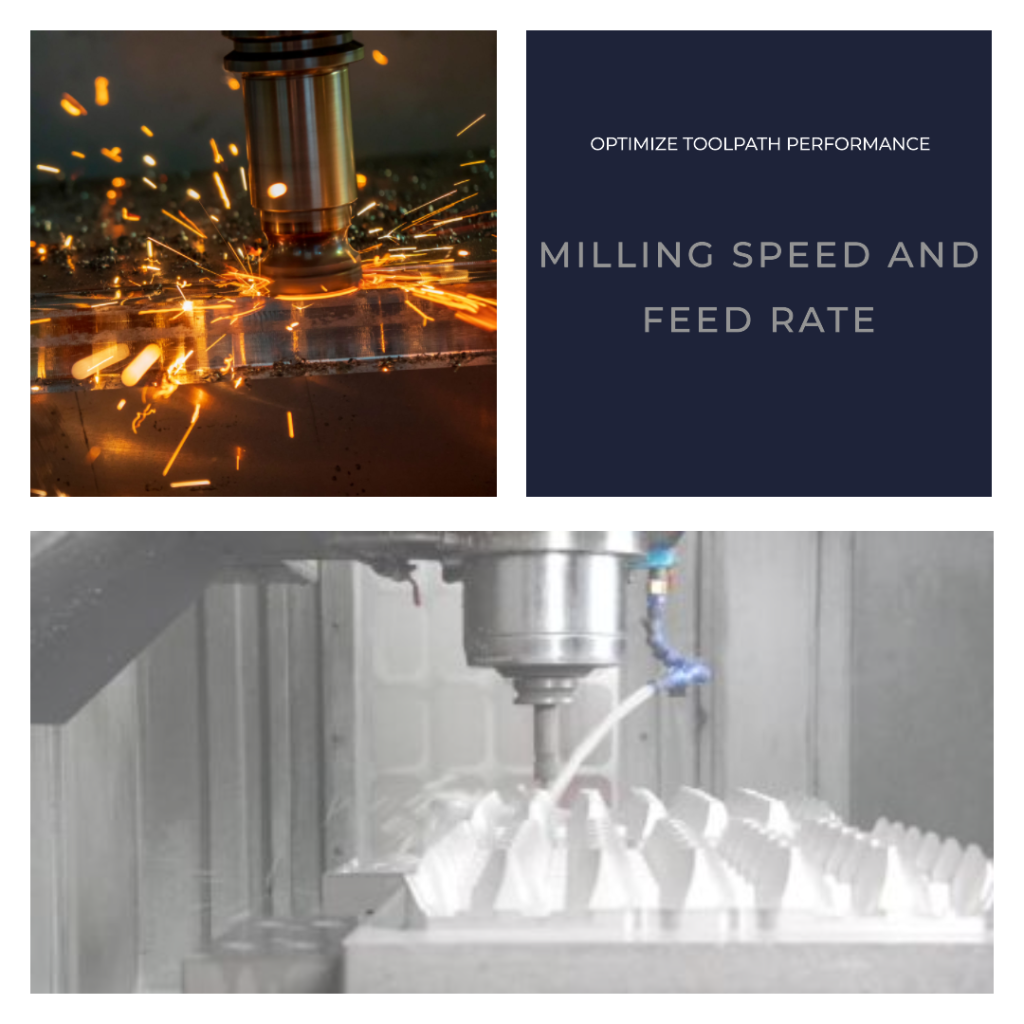Demystifying Milling Speeds and Feeds for Machinists
Determining optimal speeds and feeds is a crucial foundation of high-performance milling. By properly calculating these values, machinists can maximize metal removal rates, extend tool life, prevent tool damage, and produce superior part finish.
However, with so many variables involved, choosing the best combinations can seem like a black art. This guide will provide a comprehensive look at speeds, feeds, and their role in milling – empowering machinists with the knowledge needed to machine parts efficiently and economically.
Why Speeds and Feeds Matter
The speed refers to the rotational velocity of the milling cutter, while the feed is the rate that the workpiece moves against the cutter. Together, these parameters determine the trajectory and geometry of the cutting action.
Improper speed/feed selection can lead to a variety of issues during milling:
- Excessive tool wear and breakage
- Machine overloading and stall-outs
- Chatter, vibration, and poor finish
- Reduced material removal rates
By understanding the concepts around speeds and feeds, machinists can choose ideal combinations to get the most out of any milling operation.
Speed Relationships in Milling
The most common parameter for speed in milling is Surface Feet per Minute (SFM). This refers to the speed at which the periphery of the cutter moves against the workpiece surface.
SFM depends on two factors – the cutter’s rotational speed in RPM and its diameter in inches. The relationship is defined by:
SFM = 0.262 x Diameter (in inches) x RPM
For example, a 2″ diameter end mill spinning at 2000 RPM generates an SFM of:
SFM = 0.262 x 2 x 2000 = 1048 SFM
Conversely, if SFM and diameter are known, the formula can be rearranged to find the required RPM for that speed:
RPM = SFM / (0.262 x Diameter in inches)
So for that 1048 SFM on a 2″ end mill,
RPM = 1048 / (0.262 x 2) = 2000 RPM
These formulas allow converting between SFM, RPM, and cutter diameter for speed selection.
Optimizing Speeds for Tool and Material
The optimal SFM varies based on workpiece material and cutter properties. Harder materials require lower SFM values to handle cutting forces, while more rigid/durable cutters can tolerate higher speeds.
As an example, a 1″ carbide end mill would have the following recommended speed ranges for different materials:
- Aluminum Alloys: 3000-6000 SFM
- Carbon Steel: 120-350 SFM
- Cast Iron: 120-350 SFM
- High Nickel Alloys: 70-120 SFM
The machinist must balance these factors along with desired tool life, finish requirements, machine power, and other constraints to determine the ideal speed. Speed and feed calculators are invaluable for making these complex selections automatically.
Feed Rate Fundamentals
The feed rate indicates the distance the workpiece moves into the cutter per tooth rotation. For end mills, it’s expressed in inches per tooth (IPT), while for ball end mills it’s inches per flute revolution (IPR).
Feed directly impacts productivity, tool life, and finish. For hardest materials, maximum chip load per tooth is ~0.001″ to 0.003″. For softer metals like aluminum, optimal chip load per tooth can reach 0.010″.
Just like speed, feed selection depends on workpiece hardness and cutter material/design. Rigidity of the setup also plays a role. Larger chip loads require adequate machine stiffness to avoid deflection.
Balancing Speeds and Feeds
The combination of rotational speed and feed per tooth produces the optimal chip load needed for efficient material removal. This balance also ensures forces don’t exceed cutter strength.
As an example, here are starting speed/feed values for slot milling 4140 steel with a 1⁄2″ carbide end mill:
- Speed: 200 SFM
- Feed: 0.0035 IPT
Together these result in a chip load of ~0.001″ per tooth at 50% cutter engagement. For increased tool life, that chip load could be reduced to 0.0005″ IPT.
Finding this equilibrium through trial and error is impractical. Speed and feed calculators simplify selection by factoring in all tool, material, depth of cut, and machine parameters.
Conquering Aluminum and Other Challenges
Certain materials like aluminum, plastics, and graphites pose milling challenges:
- Aluminum’s gummy nature causes buildup, tool clogging, and rough finish. A sharp tool and flood coolant minimize this. Backing out regularly to clear chips helps too.
- Plastics and composites require low chip loads and clearance angles to avoid fiber pullout. Low friction coatings like diamond or silicon carbide reduce buildup.
- Graphites can fracture easily from vibration or modular fixturing. Low radial engagement and conservative chip loads are advised.
The properties dictating speeds, feeds, and techniques for these and other difficult-to-machine materials can be counterintuitive. Relying on machining guides or an experienced mentor helps overcome these hurdles.
The Future of Milling Speeds and Feeds
With advanced CAM programming, dynamic speed and feed adjustments are possible based on factors like radial engagement and tool wear. Machinists can expect continual improvements in this area as the IoT and data analytics transform manufacturing.
Already, cloud-based apps allow transferring optimized speed/feed values between shops. Shared data will improve benchmarking and best practices as never before possible.
In the meantime, take the time to refine speeds and feeds for your tooling and parts. The productivity and quality gains are well worth the effort. Mastering speed and feed selection unlocks the full potential of any milling work.
